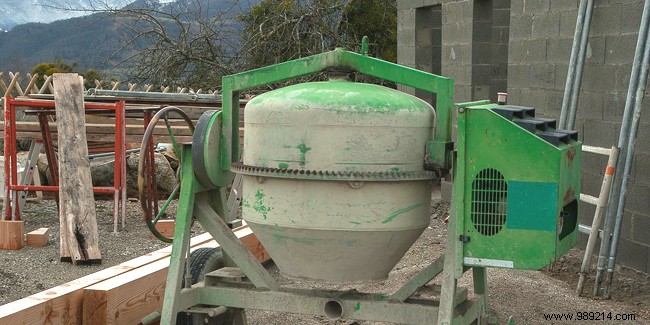
The point of covering a wall with mortar plaster is to make the surface of your wall a little smoother. Applied to a raw, concrete, brick or stone wall, cement mortar gives the walls a nice smooth appearance and also helps prevent cracks. Discover the technique for successful mortar coatings and the mistakes not to make.
To make a mortar plaster for your walls, you will need a number of tools, including a brush, a ruler, a plumb line, a trowel, a sponge. To start, you need to clean and moisten your wall to make it as smooth as possible and remove impurities that can spoil the finish.
To do this, brushing the wall is necessary, then spraying it with water to prevent the wall from being too dry, because it will absorb a large part of the water from the plaster. Once the cleaning work is done, you must project what is called the "gobetis". It is a clear, very diluted coating, which will be projected on the damp side of the wall. This sub-layer makes it possible to fluidify the whole and to solidify the coating by playing the role of a cramp. You will then take the mortar using the trowel, which you will project on the wall without waiting for the first layer to dry.
To ensure that your wall is perfectly vertical, consider placing wooden blocks or markers beforehand. The alignment and verticality will then be checked with a large wooden or aluminum ruler. You can also use a plumb line to ensure the verticality of the wall. You can also correct if necessary by pulling or pushing back the wedges.
The thickness of the plaster should be 1-2 cm. Do not forget to take up the imperfections and to fill the holes caused by the wedges with the mortar. To smooth everything, pass the trowel over the filled surfaces by making vigorous rotating movements. And for a nice finish, use a damp sponge to make circular movements, without pressing too much on the coating.
The main advantage of a plaster wall is its aesthetic appearance, which makes it possible to accommodate all types of coatings a posteriori. Do not forget, however, that the three layers of mortar must be made successively without waiting for the previous one to be completely dry. In addition, the thickness of the 3 layers must be different for each of them. The first must be clear and fluid, the second more compact and thicker and the last thinner. It is also advisable to prepare the mortar only at the time of its application, to prevent it from drying too quickly. Do not hesitate to seek advice from professionals to gather opinions in case you have any doubts or to obtain clarification on a step.